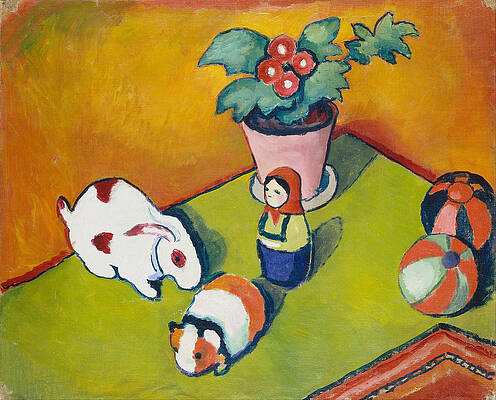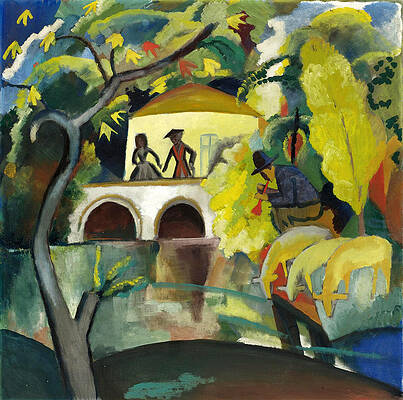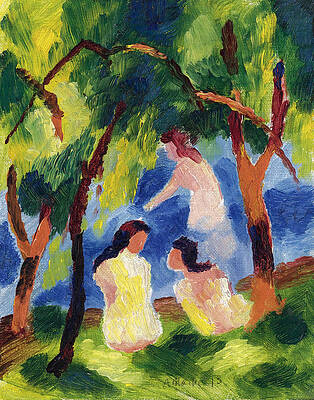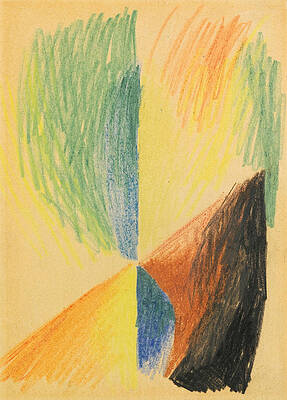August Macke
Paintings
Promenade
Geraniums Before Blue Mountain
Little Walters Toys
Colored Composition of Forms
Sitting Nude with Pillow
Reclining Nude
Garden on Lake Thun. Pomegranate Tree and Palm in the Garden
Rokoko
Women in Park with a White Parasol
Four Girls
Girls Bathing
Woman Writing
Still-Life. Colourful Bunch of Flowers in Front of a Window
Boy with Book and Toys
Three Nudes. Orange and Red
Adam and Eve
Still-Life with Bowl of Apples and Japanese Fan
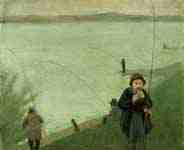
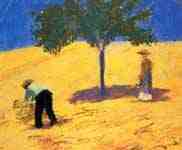
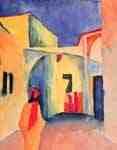
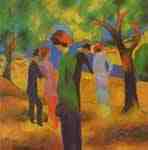
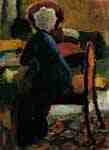

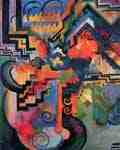
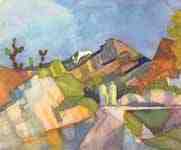
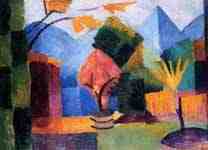
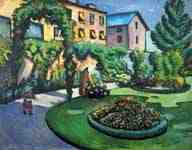
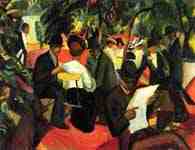
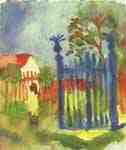


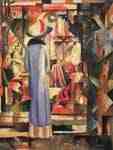
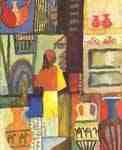
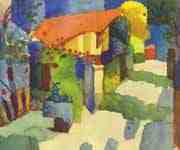
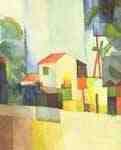

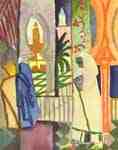

Courtyard of the country house in St. Germain
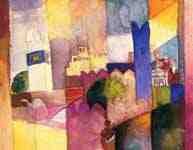
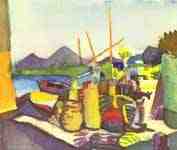
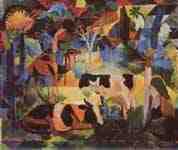
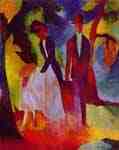
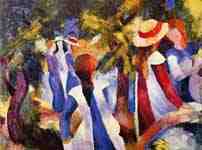
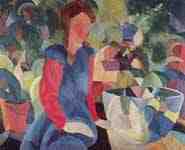
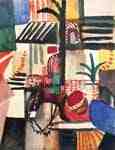
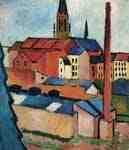
St. Mary's Church with houses and chimney
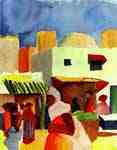
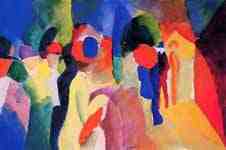

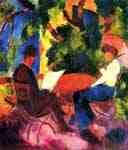
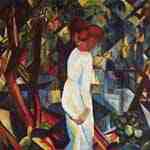
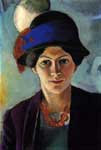
Portrait of the artist's wife with a hat
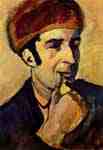
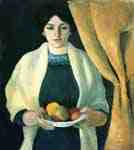


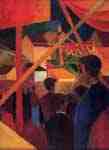

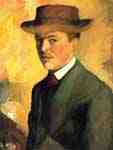


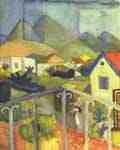
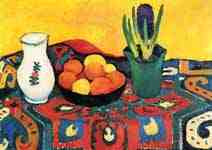
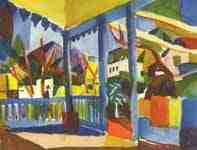
Terrace of the country house in St. Germain
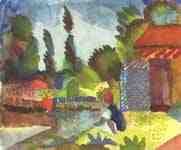
Tunis landscape with a sedentary Arabs
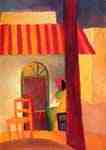


Before the hat shop (woman with red jacket and child )
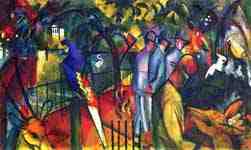
Drawings
Abstract Forms XIV
Market in Tunis II
Street in Hilterfingen
Girls playing under Trees
Man with a Crane in the Zoo
Dancer V
Pastoral Scene
Grieving Woman
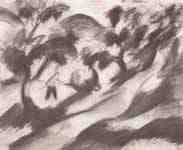
Fine Art Prints | Greeting Cards | iPhone Cases | Tote Bags | Clothing | Lifestyle | Beach ...
Colored Composition of Forms
August Macke (3 January 1887 – 26 September 1914) was one of the leading members of the German Expressionist group Der Blaue Reiter (The Blue Rider). He lived during a particularly innovative time for German art: he saw the development of the main German Expressionist movements as well as the arrival of the successive avant-garde movements which were forming in the rest of Europe. Like a true artist of his time, Macke knew how to integrate into his painting the elements of the avant-garde which most interested him.[1]
Early life
August Robert Ludwig Macke was born in Germany on 3 January 1887, in Meschede, Westphalia. He was the only son of August Friedrich Hermann Macke (1845–1904), a building contractor and amateur artist, and his wife, Maria Florentine, née Adolph, (1848–1922), who came from a farming family in Westphalia's Sauerland region. Shortly after August's birth the family settled at Cologne, where Macke was educated at the Kreuzgymnasium (1897-1900) and became a friend of Hans Thuar, who would also become an artist. In 1900, when he was thirteen, the family moved to Bonn, where Macke studied at the Realgymnasium and became a friend of Walter Gerhardt and Gerhardt's sister, Elisabeth, whom he would marry a few years later. The first artistic works to make an impression on the boy were his father's drawings, the Japanese prints collected by his friend Thuar's father and the works of Arnold Böcklin which he saw on a visit to Basel in 1900. In 1904 Macke's father died, and in that year Macke enrolled at the Kunstakademie Düsseldorf, under Adolf Maennchen (1904-1906). During this period he also took evening classes under Fritz Helmut Ehmke (1905), did some work as a stage and costume designer at the Schauspielhaus Düsseldorf, and visited northern Italy (1905) and Netherlands, Belgium and Britain (1906).
Artistic career 1907-1914
Thereafter Macke lived most of his creative life in Bonn, with the exception of a few periods spent at Lake Thun in Switzerland and various trips to Paris, Italy, the Netherlands and Tunisia. In Paris, where he traveled for the first time in 1907, Macke saw the work of the Impressionists, and shortly after he went to Berlin and spent a few months in Lovis Corinth's studio. His style was formed within the mode of French Impressionism and Post-impressionism and later went through a Fauve period. In 1909 he married Elisabeth Gerhardt. In 1910, through his friendship with Franz Marc, Macke met Kandinsky and for a while shared the non-objective aesthetic and the mystical and symbolic interests of Der Blaue Reiter.
Macke's meeting with Robert Delaunay in Paris in 1912 was to be a sort of revelation for him. Delaunay's chromatic Cubism, which Apollinaire had called Orphism, influenced Macke's art from that point onwards. His Shops Windows can be considered a personal interpretation of Delaunay's Windows, combined with the simultaneity of images found in Italian Futurism. The exotic atmosphere of Tunisia, where Macke traveled in April 1914 with Paul Klee and Louis Moilliet was fundamental for the creation of the luminist approach of his final period, during which he produced a series of works now considered masterpieces. August Macke's oeuvre can be considered as Expressionism (in its original German flourishing between 1905 and 1925), and also as part of Fauvism. The paintings concentrate primarily on expressing feelings and moods rather than reproducing objective reality, usually distorting colour and form.
Macke's career was cut short by his early death in the second month of the First World War at the front in Champagne, France, on 26 September 1914. His final painting, Farewell, depicts the mood of gloom that settled after the outbreak of war. This was also the same year that he painted the famous painting, Türkisches Café in München (1914).
August Macke Prize
Main article: August Macke Prize
The August Macke Prize, was given the first time in 1959 by the districts Arnsberg, Brilon, Olpe and Meschede, town of birth of August Macke in Germany.
August-Macke-Haus
Main article: August-Macke-Haus
The August-Macke-Haus is a museum dedicated to August Macke founded in 1991. It is located in Macke's former home in Bonn, where he lived from 1911 to 1914.
Art market
At a 1997 Christie's auction, Macke's The Couple at a Garden Table (1914) was sold for £2 million.[2] Market in Tunis (1914) sold for £2.86 million ($4.1 million) in 2000.[3] Consigned by the estate of Ernst Beyeler, the artist’s Im Bazar (1914) was auctioned for £3.96 million – then four and a half times the high estimate – at Christie's in 2011.[4]
References
August Macke Biography. Augustmacke.org, 2002-2011, retrieved June 5, 2011
Souren Melikian (October 25, 1997), Great Substitution Game Generates High Stakes and Huge Profits International Herald Tribune.
Souren Melikian (October 28, 2000), Brokerages May Alter the Art Game: Earthquakes in the Auction World International Herald Tribune.
Souren Melikian (June 22, 2011), Christie's Sale Soars, Driven by Beyeler Estate International Herald Tribune.
Further reading
August Macke und die rheinischen Expressionisten ... [exhibition catalogue, Brucke-Museum, Berlin] (2002)
August Macke und die fruhe Moderne in Europa [exhibition catalogue] (2001)
Ursula Heiderich, August Macke Aquarelle Werkverzeichnis (1997)
Anna Meseure, August Macke 1887-1914 [English tr. by I. Galbraith] (1991. Taschen)
G. Vriesen, August Macke (1957)
----
Fine Art Prints | Greeting Cards | Phone Cases | Lifestyle | Face Masks | Men's , Women' Apparel | Home Decor | jigsaw puzzles | Notebooks | Tapestries | ...
----
Artist
A - B - C - D - E - F - G - H - I - J - K - L - M -
N - O - P - Q - R - S - T - U - V - W - X - Y - Z
Retrieved from "http://en.wikipedia.org/"
All text is available under the terms of the GNU Free Documentation License




